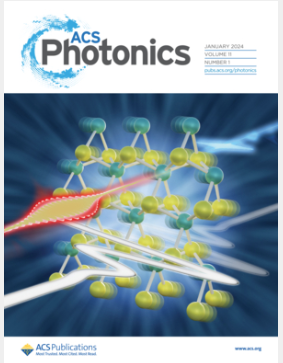Unveiling Low-Energy Emission in 2D Organic–Inorganic Perovskites: A Photorecycling and Electron–Phonon Coupling Study
IF 6.7
1区 物理与天体物理
Q1 MATERIALS SCIENCE, MULTIDISCIPLINARY
引用次数: 0
Abstract
2D hybrid organic–inorganic perovskites have demonstrated outstanding optoelectronic properties. Among their photophysical features, low-energy photoluminescence (PL) peaks are often observed, yet their origin remains not fully understood, particularly due to the coexistence of multiple possible emission pathways. To address this, we hypothesized that structural rigidity─determined by the organic spacer─may influence photon recycling and, consequently, the nature of low-energy emission. We thus investigated the origin of low-energy emission in both (BA)2PbBr4 and (PEA)2PbBr4 across different material morphologies including microcrystals and colloidal nanoplatelets. Through a combination of structural characterization, steady-state and temperature-dependent PL measurements, and density functional theory (DFT) calculations, we demonstrate that the low-energy emission observed in microcrystalline samples arises predominantly from photon recycling rather than self-trapped excitons (STEs) or defect states. Importantly, we find that the size and orientation of the crystals strongly affect the observed PL, supporting the interpretation that total internal reflection (TIR) within the perovskite acts as a waveguiding mechanism for photon propagation and reabsorption. Our findings reveal that the structural rigidity of the perovskite plays a crucial role in governing photorecycling photon propagation. Specifically, the flexible lattice of (BA)2PbBr4 facilitates photon recycling with energy losses, resulting in pronounced low-energy emission, whereas the rigid structure of (PEA)2PbBr4 better preserves the photon energy during propagation. The observed differences in electron–phonon coupling further support the role of structural flexibility in modulating the transport of emitted photons. These insights provide a deeper understanding of light-matter interactions in 2D perovskites and highlight the importance of crystal engineering in optimizing their optical properties. By tailoring the organic spacer and controlling structural rigidity, it is possible to fine-tune emission characteristics for applications in optoelectronic devices.

揭示二维有机-无机钙钛矿的低能发射:光回收和电子-声子耦合研究
二维杂化有机-无机钙钛矿具有优异的光电性能。在它们的光物理特征中,经常观察到低能的光致发光(PL)峰,但它们的起源仍然不完全清楚,特别是由于多种可能的发射途径共存。为了解决这个问题,我们假设由有机间隔层决定的结构刚度可能会影响光子的再循环,从而影响低能发射的性质。因此,我们研究了(BA)2PbBr4和(PEA)2PbBr4在不同材料形态下(包括微晶和胶体纳米血小板)低能发射的来源。通过结合结构表征、稳态和温度相关的PL测量以及密度泛函理论(DFT)计算,我们证明了在微晶样品中观察到的低能发射主要来自光子回收,而不是自捕获激子(STEs)或缺陷态。重要的是,我们发现晶体的大小和取向强烈影响观测到的PL,支持钙钛矿内的全内反射(TIR)作为光子传播和重吸收的波导机制的解释。我们的研究结果表明,钙钛矿的结构刚度在控制光循环光子传播中起着至关重要的作用。具体来说,(BA)2PbBr4的柔性晶格有利于光子的循环利用,同时存在能量损失,导致明显的低能量发射,而(PEA)2PbBr4的刚性结构在传播过程中更好地保留了光子的能量。观察到的电子-声子耦合的差异进一步支持了结构柔韧性在调制发射光子输运中的作用。这些见解提供了对二维钙钛矿中光-物质相互作用的更深入理解,并强调了晶体工程在优化其光学特性方面的重要性。通过定制有机间隔和控制结构刚度,可以微调光电器件的发射特性。
本文章由计算机程序翻译,如有差异,请以英文原文为准。
求助全文
约1分钟内获得全文
求助全文
来源期刊

ACS Photonics
NANOSCIENCE & NANOTECHNOLOGY-MATERIALS SCIENCE, MULTIDISCIPLINARY
CiteScore
11.90
自引率
5.70%
发文量
438
审稿时长
2.3 months
期刊介绍:
Published as soon as accepted and summarized in monthly issues, ACS Photonics will publish Research Articles, Letters, Perspectives, and Reviews, to encompass the full scope of published research in this field.
 求助内容:
求助内容: 应助结果提醒方式:
应助结果提醒方式:


